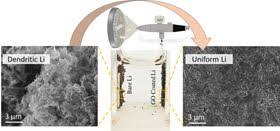
Photo retrieved from http://www.boliden.com/fi/Press/Press-images/Products/Silver/
Silver is one of the most popular material in last decade. Silver nanoparticles have been hitting the headlines for a few years now, both as a smart new technology for preventing bacterial infection, and as a potential new health and environmental threat.
part from antibacterial properties,there are several application area of silver nanoparticles since silver has remarkable characteristics.Silver nanoparticles are nanoparticles of silver of between 1 nm and 100 nm in size.Silver nanoparticles have unique optical, electrical, and thermal properties and are being incorporated into products that range from photovoltaics to biological and chemical sensors. The unique properties of silver nanoparticles make them ideal for numerous technologies, including biomedical, materials, optical, and antimicrobial applications, as well as for use in nanotoxicology studies. Silver nanoparticles some spicific properties such as;
- high electrical conductivity,
- high stability,
- low sintering temperatures.
Also thanks to these unique properties of silver nanoparticles, it can be utilized in several fields such as molecular diagnostics and photonic devices, which take advantage of the novel optical properties of these nanomaterials. Moreover, silver nanoparticles commonly used in antimicrobial coatings, textiles, diagnostic, wound dressings,optics and biomedical devices now contain silver nanoparticles that continuously release a low level of silver ions to provide protection against bacteria.
Posted by Direniş ÇAYLI on September 30, 2016
Comments
Post a Comment